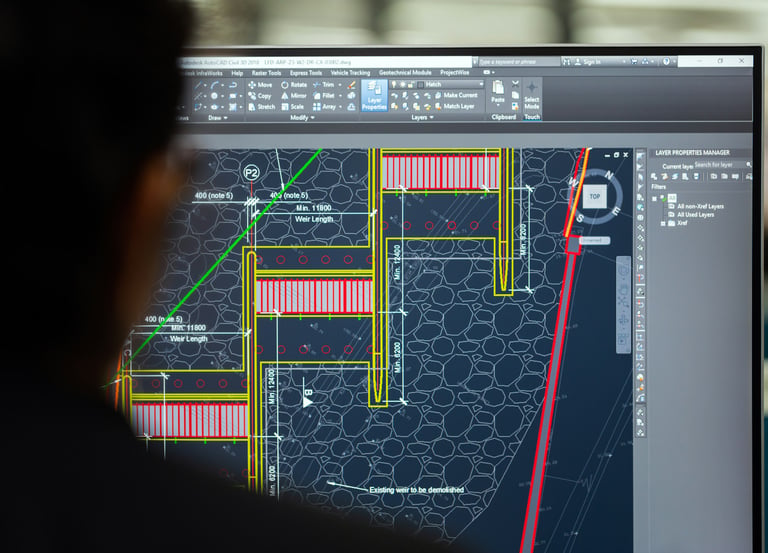BIM Offsite Deployment Services
In today's dynamic construction industry, many companies struggle to hire skilled personnel for Building Information Modeling (BIM) roles. BIMXITY offers a comprehensive solution to this problem.
Our Company is the Certified Shared Services Provider: Digital Manpower Supply [Presented by Specialists Trade Alliance of Singapore (STAS)]


Our Commitment
We will handle all your BIM needs seamlessly, assigning our expert BIM personnel to attend all site meetings, whether in person or via Zoom, ensuring that your projects run smoothly without any hiccups.
Local Production with Global Expertise
Our Offsite Deployment Services encompass:
Architecture (Arch)
Structure
Mechanical, Electrical, and Plumbing (MEP)
BIM Coordinator
BIM Manager


Key Benefits
No Need to Hire BIM Personnel: Reduce headcount challenges by relying on our skilled team.
Cost Savings: Save on investments in software, hardware, and training.
Expertise: Benefit from our experienced BIM professionals.
Seamless Integration: Ensure smooth coordination and management of all BIM activities.
Frequently Asked Questions (FAQ)


Why should I use BIM Offsite Deployment Services from you?
We provide you wih Comprehensive BIM Modeling, BIM Coordination & Management, On-Site or Virtual Attendance, reducing your additional hiring or investment, and End-to-end Support from Tender to As-Built.
How to start BIM Offsite Deployment Services with you?
Consultation: We begin with an initial consultation to understand your project scope, requirements, and timelines.
Deployment of BIM Team: We assign our BIM Coordinator/Manager and BIM professionals to handle all the technical tasks required for your project.
BIM Modeling & Coordination: We will deliver high-quality BIM models and ensure smooth coordination throughout the project lifecycle.
Ongoing Support: From the tender phase to the final as-built documentation, we provide continuous support and updates to keep your project progressing smoothly.
BIM Levels of Development
We undertake all BIM levels to ensure a structured approach throughout the project lifecycle:
BIM Level 1: Focused on 2D CAD and basic 3D modeling, suitable for projects that require minimal collaboration.
BIM Level 2: Involves collaborative work with 3D models, enabling data sharing between different stakeholders. This level promotes greater integration and coordination among disciplines.
BIM Level 3: Represents a fully integrated BIM environment, allowing for real-time collaboration and data exchange. This level supports advanced analytics and lifecycle management, optimizing project outcomes.
Integration for Facility Management Crossover
Our services are designed to seamlessly transition into Facility Management (FM) practices. By utilizing BIM Level 3, we ensure that all project data and models are compatible with FM systems, providing a comprehensive platform for ongoing management and maintenance. This integration offers:
Enhanced Data Accessibility: Facility managers can access real-time data regarding building systems, maintenance schedules, and asset management directly from the BIM model.
Lifecycle Management: The transition to Facility Management is streamlined, allowing for efficient tracking of assets and maintenance needs throughout the lifecycle of the infrastructure.
Proactive Maintenance: With integrated data analytics, facility management teams can anticipate maintenance needs, reducing downtime and extending asset lifespans.
Our experience with large-scale infrastructure projects using BIM Level 3 underscores the importance of integrated collaboration and data management. By leveraging the full capabilities of BIM Level 3 and ensuring a smooth crossover to Facility Management, we consistently deliver projects that meet or exceed client expectations while addressing the complexities inherent in large-scale infrastructure development.
Level of Development (LOD) Stages
We adhere to established LOD standards throughout the project lifecycle, ensuring clarity and precision in our deliverables:
LOD 100: Conceptual design with basic representations.
LOD 200: Generalized systems and assemblies.
LOD 300: Detailed design with specific components.
LOD 400: Fabrication and assembly details.
LOD 500: As-built documentation for facility management.
Key Benefits
Eliminate Hiring Challenges: Reduce the need for in-house BIM personnel by leveraging our skilled team.
Cost Efficiency: Achieve savings on investments in software, hardware, and training.
Expertise on Demand: Gain access to our experienced BIM professionals who are well-versed in industry best practices.
Seamless Integration: Ensure smooth coordination and management of all BIM activities across all project phases.
